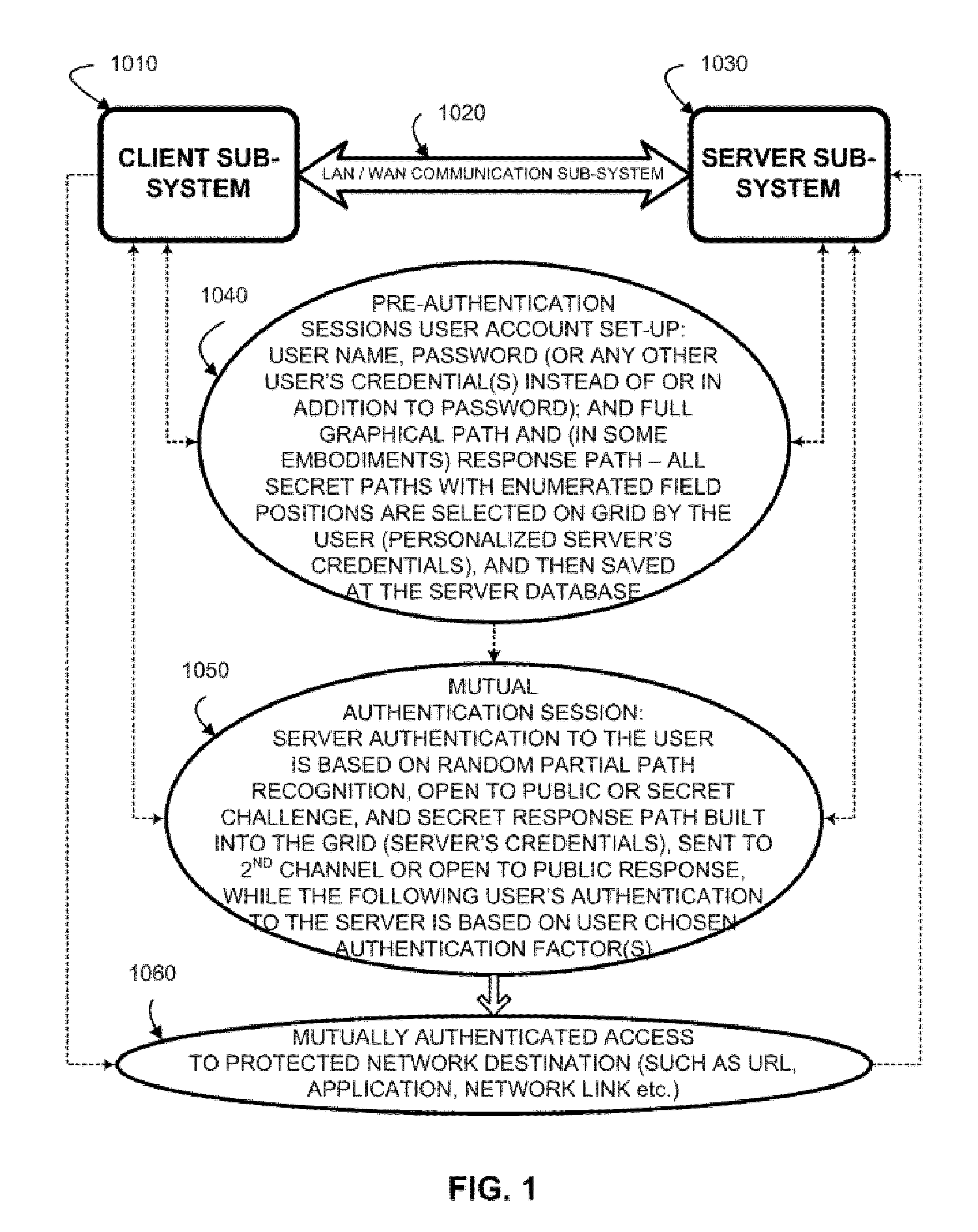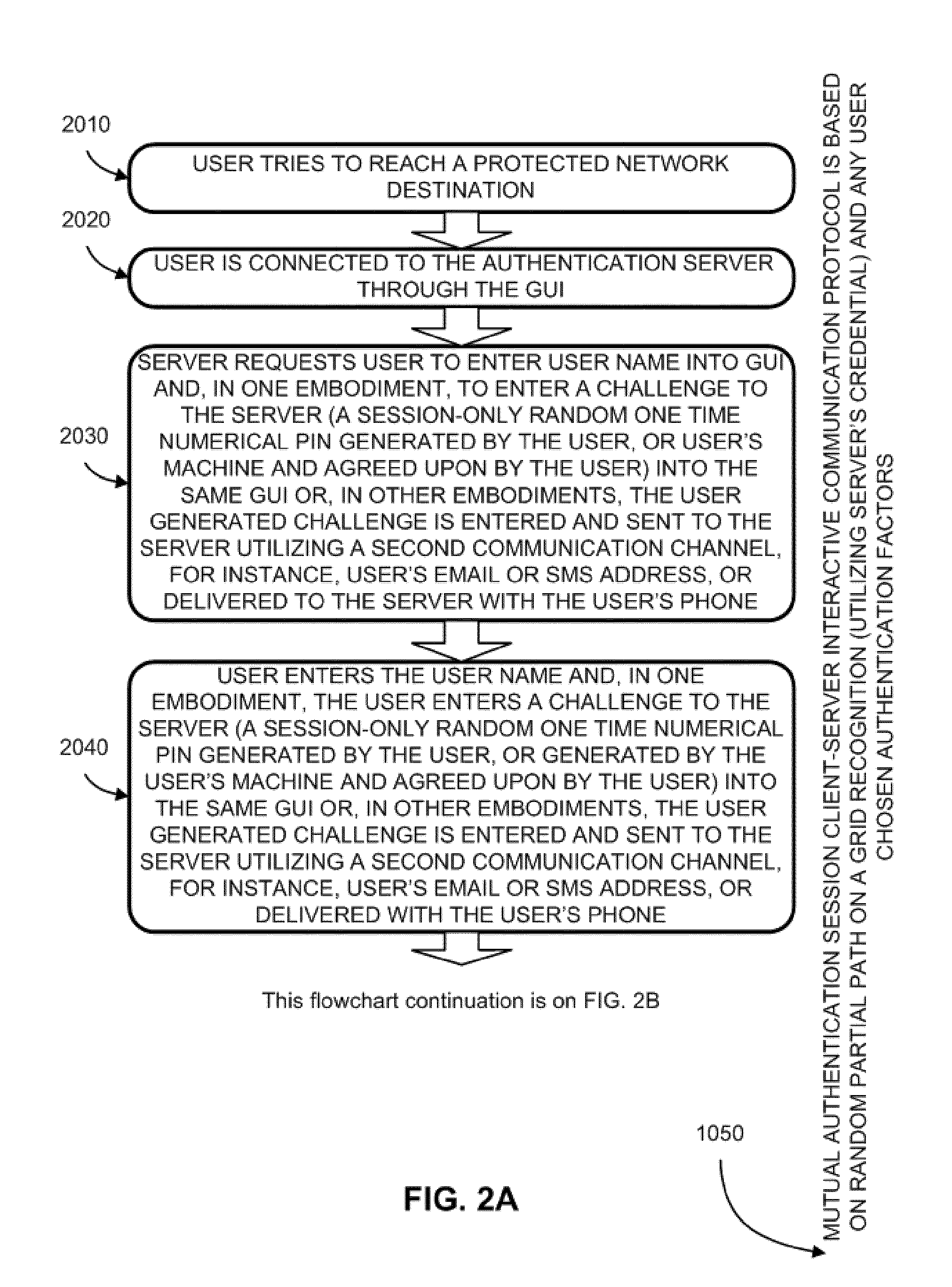System and method for in- and out-of-band multi-factor server-to-user authentication
a server-to-user authentication and multi-factor authentication technology, applied in the field of system and method for in-band multi-factor server-to-user authentication, can solve the problems of not being sufficiently secure or usable, failing to meet the personalized security requirements of a vast plurality of users, and the prior art server-to-user authentication algorithms and protocols are quite limited in scope, so as to achieve less complex infrastructure, less costly for practical implementation, and more flexibility security requirements
- Summary
- Abstract
- Description
- Claims
- Application Information
AI Technical Summary
Benefits of technology
Problems solved by technology
Method used
Image
Examples
Embodiment Construction
[0073]A detailed description of embodiments of the present invention is provided with reference to FIGS. 1 through 9.
[0074]FIG. 1 illustrates a basic communication set up for a representative Random Partial Digitized Path Recognition (RPDPR) authentication protocol utilized for a server authentication to the user at a client platform, according to the present invention. A client subsystem 1010 communicates by communication media, such as a local area network or wide area network communications subsystem 1020, with server subsystem 1030. Protected network destination 1060 controls access to resources such as secure web sites identified by URLs, links to secure networks, applications, and the like.
[0075]To set up access, pre-authentication session 1040 is executed by client subsystem 1010 and server subsystem 1030. In pre-authentication session 1040, a user account is set up in server subsystem 1030, the user name and a shared secret digitized path represented by an ordered data set o...
PUM
 Login to View More
Login to View More Abstract
Description
Claims
Application Information
 Login to View More
Login to View More - R&D
- Intellectual Property
- Life Sciences
- Materials
- Tech Scout
- Unparalleled Data Quality
- Higher Quality Content
- 60% Fewer Hallucinations
Browse by: Latest US Patents, China's latest patents, Technical Efficacy Thesaurus, Application Domain, Technology Topic, Popular Technical Reports.
© 2025 PatSnap. All rights reserved.Legal|Privacy policy|Modern Slavery Act Transparency Statement|Sitemap|About US| Contact US: help@patsnap.com



